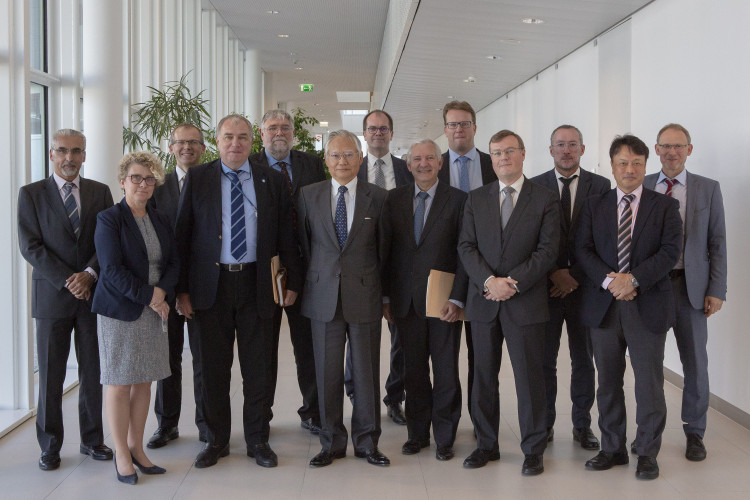The International Atomic Energy Agency (IAEA) and an association of leading national waste management organizations have pledged to strengthen cooperation and coordination on the development of safe, effective and secure solutions for the disposal of high level radioactive waste (HLW) and spent nuclear fuel declared as waste.
IAEA officials including Deputy Director General Mikhail Chudakov, Head of the Department of Nuclear Energy, and Deputy Director General Juan Carlos Lentijo, Head of the Department of Nuclear Safety and Security, met at the IAEA in Vienna earlier this month with a delegation from the International Association for Environmentally Safe Disposal of Radioactive Materials (EDRAM). The gathering provided an opportunity to discuss key issues related to implementing comprehensive national waste management strategies, including deep geological disposal (DGD) for HLW and spent nuclear fuel.
“This was a great opportunity to build on our ongoing communication and discuss the key topics relevant to radioactive waste and spent fuel management,” Chudakov said. “These matters are at the heart of the sustainable use of nuclear technologies.”
While radioactive waste has been safely and securely managed for decades, there is still no facility in operation for disposing of HLW or spent nuclear fuel not destined for re-processing or re-use. But meeting participants noted that good progress is being made—particularly in Finland, Sweden and France—on developing DGD, which entails permanently placing solid radioactive waste in a facility located underground in a stable geological formation.
“We at the Agency reiterate that the only solution for safe radioactive waste management is disposal, as outlined in the IAEA safety standards,” Lentijo said. “This includes geological disposal of high level waste and spent fuel declared as waste. Our waste management support to Member States follows this principle.”
EDRAM promotes robust disposal programmes for HLW globally to ensure safety for present and future generations. The association groups the heads of waste management organizations from 11 countries: Belgium, Canada, Finland, France, Germany, Japan, Spain, Sweden, Switzerland, the United Kingdom and the United States.
Because DGD programmes take decades to develop, the IAEA is collecting Member States’ experiences and approaches for retaining and transferring knowledge about them. To support this effort, the heads of the national organizations representing EDRAM at the meeting—coming from Canada, Finland, France, Germany and Japan—offered to jointly develop strategic assessments of this IAEA project. Other IAEA activities also discussed at the meeting include a project on the development and review of safety cases for both the operational and post-closure periods for DGD.
For their part, IAEA officials reiterated the importance of continued support from EDRAM and its member organizations for Agency activities and programmes in support of radioactive waste management in Member States.
“We all need to continually exchange information on these matters between us and with international organizations, and understand very deeply the differences and commonalities among them, including from a technical and industrial point of view, in order to be able to explain them to our stakeholders,” said EDRAM Chairman Shunsuke Kondo, who heads NUMO, Japan’s waste management organization.


